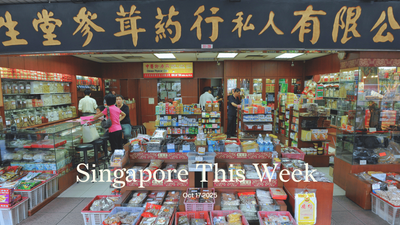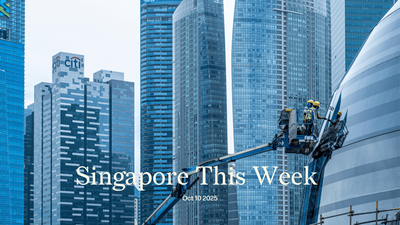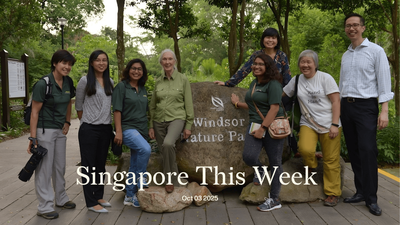Politics: Tripartite bros
The National Trade Union Congress (NTUC) is an umbrella group that, instead of acting as a separate power centre as is common elsewhere, has long worked in lockstep with the pro-business agenda of the ruling People’s Action Party (PAP). The PAP’s co-option of the labour movement—Lee Kuan Yew first harnessing its fire and then dousing it—has enabled the creation of a grossly unequal society that privileges capital owners and elite “talent” above all others. Yet in recent decades, as Singaporean workers have become more aware of socio-economic injustices, there has been growing scrutiny of this incestuous relationship.
The parliamentary debate last week was one of the liveliest yet. Gerald Giam, member of Parliament (MP) with the Workers’ Party (WP), called for the independence of unions. Koh Poh Koon, senior minister of state for manpower, said that by attacking this “symbiotic” relationship, the WP is threatening Singapore’s unique model of tripartism. Recalling the WP’s own close relationships to unions during its founding (1957), Koh said Giam is “like a bit of a toxic ex-boyfriend”: approving of unions’ love with the WP but no other. Pritam Singh, WP chief, replied that today’s political situation is different from 1957. “I would be grateful if the senior minister of state can raise a single example where an NTUC secretary-general or a deputy secretary-general has spoken out against a 3G or 4G leader to defend the rights of workers.” Leong Mun Wai of the Progress Singapore Party echoed the WP’s call for greater independence.
The debate hinged on two now familiar themes in Singaporean politics. First, the PAP insinuating that any shift from its sacred ground would put us on a slippery slope to democratic hell. Giam retorted that Koh has difficulty seeing between the “dichotomy of full symbiosis and full confrontation with unions. We are calling for a third way.” Second, the opposition championing ideals (independence), and the PAP countering with allusions to pragmatism and results. “So I hope that you do not judge NTUC or SNEF (Singapore National Employers Federation) by what you think the relationship between unions, employers and the government should be, but look at the record,” said Tan See Leng, manpower minister. “Look at the outcomes...that tripartism has delivered for Singapore through the decades.” He’s right. Singaporean workers should look at the outcomes. No minimum wage; some of the highest income and (likely) wealth inequalities in the developed world; and longer hours worked than in many developed countries. Majulah.
Society: Rider woes
Delivery riders are some of the most vulnerable workers in Singapore. They earn pitifully little, they’re occasionally subject to torrents of rain and abuse, and their movements are dictated by algorithms that seem to gamify life itself. Of 1,002 food delivery riders surveyed by the Institute of Policy Studies in 2022, one third had been in at least one accident that required medical attention. The respondents’ median monthly income of S$1,925 was less than half the national median monthly salary of S$4,680 in 2021. Almost a quarter of them earned less than S$1,000 a month.
Thankfully, a new Platform Workers Bill is set to improve their benefits, safeguards, and working conditions. It effectively creates a new legal category for platform workers, bridging the gap between traditional employees and the self-employed. The bill covers those who provide ride-hailing or delivery services for an online platform, and are subject to the platform’s control. Last year, they were about 70,500 strong, including 22,200 cabbies, 33,600 private-hire drivers and 14,700 delivery workers. The law, passed unanimously by Parliament and set to come into effect next year, will incorporate them further into the Central Provident Fund system; oblige employers to provide workers with work injury compensation insurance; and allow for collective representation through platform work associations, akin to Singapore’s existing trade unions. (Don’t hold your breath.) Koh warned platform operators about trying to pass down the increased costs to workers or consumers.
This follows recommendations by the two-year-old Tripartite Workgroup on Representation for Platform Workers. It comprised platform operators, such as Yee Wee Tang, Grab’s managing director; government officials, such as Lee Chung Wei, a director at the Ministry of Manpower; and labour movement representatives, such as Yeo Wan Ling, director of NTUC U SME and U Women and Family, and—surprise, surprise—a PAP MP. Absent from the working group were the workers themselves.
Some further reading: In “Power to the people: Labour Day Rally 2023”, Peter Yeo, a 52-year-old food delivery rider, told Jom about his life. “When you go to [certain condominiums], I don’t know why the condo management doesn’t allow [us to go in]. We have to park our bicycle. Imagine, when you’re sending [a delivery] to the last block, it’ll take you 20 minutes to walk down from the guardhouse to the carpark just to deliver the food.”
Society: The urge to splurge
Is there ever a good time to splash out S$335m in taxpayer money on a national monument? That’s how much the Founders’ Memorial at Gardens by the Bay will likely cost. Edwin Tong, the minister for culture, community and youth, had to reveal the estimate this week in Parliament following a question from the WP. Critics may consider this “gallery and gardens experience” a horticultural megaphone through which the current dispensation can loudly remind people that its lineage goes back to the heroes of independence.
Propaganda projects are not novel. Vladimir Lenin inaugurated the Plan for Monumental Propaganda— delightful merging of materiality and metaphor—to produce buildings and statues valourising the heroes of the Bolshevik Revolution. Lenin may have given it a name, but the phenomenon goes back to at least the Roman Emperor Vespasian. He commissioned the Colosseum to distract the public from the fact that in the previous year, 68-69 AD, four emperors had played a murderous game of musical chairs that had brought the Empire to the brink of catastrophe. The most egregious recent example of this is India’s so-called Statue of Unity, which denuded the public exchequer of US$430m (S$700m).
Supporters of the Founders’ Memorial could claim that Singapore has paid its dues. The country has collectively laboured for the past six decades, and now deserves these lavish indulgences. If the US can have Mount Rushmore, carved during the Great Depression, then surely, the argument goes, the Singapore story deserves to be commemorated too, along with its protagonists. And such a project should redound to the benefit of a state often accused of neglecting its past.
Given these contrary impulses, there can never be an agreement on a “good time”. What there perhaps can be agreement on is a “better” or “worse” time. Given the current cost of living crisis, the vouchers and cash payments doled out by the government, the income-inequality which stalks our society, now would be a “worse” time. With ordinary Singaporeans feeling the squeeze, a memorial costing the equivalent of almost S$100 per citizen does not for an edifying headline make. A Redditor vented: “Only people born with a silver spoon do such bo liao stuff”. Oh well. At least it’s not another Raffles statue.
Society: Cancelled
Does “cancel culture” exist? The term has been bandied around so often that it runs the risk of becoming meaningless. Just about anyone with a platform has had a take on what it is, when it’s occurred, who’s doing the cancelling, why it should be outlawed, resulting not in a greater clarity, but in confusion and conflation. A recent Straits Times (ST) article profiled several “victims of cancel culture”, who said that they were, to varying degrees, harassed, trolled, shamed, and even threatened with physical harm, as well as been on the receiving end of racism and sexism. None of this is acceptable behaviour; but whether they’d been cancelled is debatable.
“Cancel culture” has been broadly defined as the practice of holding public figures and corporations accountable, usually online, for what they say and do. This has manifested as elements of unfollowing, criticising, ostracising or removing support for an individual or brand; usually for having posted or done something that’s offensive and objectionable. Proponents argue that at its core, “cancel culture” is about calling truth to power. When wielded to redress a larger imbalance of power, it can be a formidable tool for minorities and the marginalised to circulate and amplify their voices, to call-out injustices—like racism, sexism, homophobia, transphobia—in a society that has otherwise silenced them.
The loudest critics of “cancel culture”, however, frequently frame it as anything other than empowering. Instead, they conjure the spectre of a “woke mob” shutting down opposing views, and blame its prevalence on an intolerant extreme left. In Singapore, the religious right has expressed its fear of being “a target of cancel campaigns” for speaking out on issues around LGBTQ rights, for instance. So much so that K Shanmugam, the home affairs and law minister, may want to legislate against it. But that, in turn, could embolden bigots, who may feel less accountable for their online vitriol. Is the government going to police homophobic speech?
The irony is that Singapore’s censorial establishment claims to be acting to protect free expression. Ultimately it’s about the power to decide who says what. Lawmakers should first interrogate what has been labelled “cancelling”, and try to distinguish them from what writer Nesrine Malik has called “the general din of anarchic censure”. In response to the ST piece, one X user asked: “why do we need an article on cancel culture every quarter. yall regurgitate the same shit over and over again.” To which another user posited: “...it’s so next time someone is trying to hold ‘some people’ accountable, they can use this as an excuse.”
History weekly by Faris Joraimi
Pope Francis was in town as part of his 12-day Asian tour (which exposed, once again, that the West still thinks we’re in China.) He praised Singaporean policies protecting the vulnerable, but in characteristic style, gently rebuked our treatment of migrant workers and “placing merit above all things”. Did anyone ask how he felt about our mass arrest of Catholic social workers in 1987, under the pretext of being “Marxist” conspirators? As an Argentinian priest, Francis emerged from an activist Catholic Church that fought dictatorships and inequality on behalf of the poor. Latin America, after all, was the birthplace of liberation theology, which upholds social justice for the oppressed. Francis’s outspoken support for various progressive causes has earned him titles ranging from “the people’s Pope”, to “communist turd” (by Argentinian president Javier Milei). A lot has happened since Catholicism first landed on our shores, brought by Portuguese invaders trying to capture the lucrative spice trade from Muslim domination. The Church back then worked hand in glove with colonial expansion: the Inter caetera, issued by Pope Alexander VI in 1493, divided the world into Spanish and Portuguese zones of conquest and conversion.
The Philippines aside, most of South-east Asia remained unconverted, yet there’s a colourful history of Catholic encounters with local cultures and beliefs. Francis Xavier (1506-1552), the famous travelling saint who first brought Christianity to Japan, preached in Malay to congregations in Malacca. After he died on an island off Guangdong, his body arrived in Malacca three months later, perfectly preserved. Portuguese Malacca was the scene of many such miracles, adding to the city’s mythic status in Malay history. In the 1620s, wrote historian Tara Albert, a woman in childbirth death-throes named Juliana Coutinha was rescued by wearing the belt of a local Franciscan friar, Luíz da Cruz. My favourite account is from Eredia’s classic Description of Malacca (1613). Once, the “orang benua”, or hinterland-people transformed themselves into tigers and attacked women and children in Malacca town at night. To end this terror, the Portuguese bishop of Malacca, Dom Jorge de Santa Luzia, excommunicated them and led prayers at High Mass during the Feast of the Assumption. The tiger-spirits disappeared, astounding many “infidels” and “natives”, who promptly converted. Did the Catholic faith defeat local magic, or become part of it? At Indonesia’s national mosque, Pope Francis kissed the grand imam’s hand, after the latter kissed his head: a different kind of miracle.
Arts: Nine Yard Sarees goes the whole nine yards
A sprawling multigenerational epic told in the form of succinct short stories has won this year’s Singapore Literature Prize for English fiction. Prasanthi Ram’s debut offering on the migratory and intimate journeys of a Tamil Brahmin family, Nine Yard Sarees, has been gaining traction in local literary circles over the past year; Vogue Singapore gushed over the “breathtaking” short story cycle, while ST named it “one of the best debut books of Singapore fiction”. The lecturer at Nanyang Technological University, resplendent in a turquoise and gold sari, was visibly emotional as she received her trophy from Cultural Medallion winner Meira Chand at the awards ceremony earlier this week, while her publishing team at Ethos Books whooped and cheered. “I’m completely in shock,” said Prasanthi, who’d written the manuscript while caregiving for her late father. She later posted adorable running commentary of this shock to social media: “me at this moment: what is happening who am I where am I don’t trip on these stairs or your saree will unravel...and please smile because the president is looking at you and omg this is the meira chand”.
While the biennial prize boasts a total of 18 categories across four languages, it’s the English-language texts, with their wider reach, that usually bask in the spotlight. Singapore Book Council (SBC), the awards organiser, added three new categories this year to recognise the growing diversity of work. Kenfoo’s self-published satire, COCKMAN, copped the comics category “for its total lack of seriousness and compromise and its over-the-top audacity and absurdity”; Jeremy Tiang took the translation prize for his “impeccable” work on Cocoon, Zhang Yueran’s clear-eyed novel on the Cultural Revolution; and the oldest nominee ultimately made the best debut: Peter Ellinger, a 91-year-old legal scholar, for his “monumental” memoir, Down Memory Lane. Suratman Markasan, whom our history editor called “[o]ne of Singapore’s grand old men of Malay letters”, was posthumously conferred the SBC Achievement Award; his words formed the prize’s theme this year. “Mata Hati” can be translated as “what the heart sees”, but also refers to a more “expansive notion of sight that is led by our senses”. It’s a good reminder—as the multi-perspective Nine Yard Sarees does so deftly—that to write about Singapore, its inhabitants and its histories is to seek a synesthetic vantage point where we might perceive ourselves more clearly than we have before, in all our contradictions, complexities and joys.
Some further reading: In “A family portrait in motion: Prasanthi Ram’s Nine Yard Sarees”, Varsha Sivaram explores the complexities, confusions and conflicts central to the Tamil Brahmin diasporic experience in Singapore.
Business: Work from JB?
You may not need to wait for the weekend to hop over to Johor Bahru (JB) for cheap groceries, petrol and food. As high costs bite, businesses in Singapore are turning their gaze towards cheaper office options up north. JB has seen a dramatic spike in co-working spaces, from less than five in 2017 to more than 60 last year. Occupancy rates at some are above 90 percent, driven partly by “nearshoring” from Singapore. In tandem with Malaysian companies keen to be closer to their clients here, the trend is shaping Greater JB’s growth as Malaysia’s second metropolitan hub. As JB-Singapore connectivity deepens through the Rapid Transit System and Special Economic Zone, the demand for shared workspaces is expected to keep increasing, potentially reshaping the region’s business landscape. The dream of Malaysian char kway teow for lunch could soon be a reality.
If you enjoy Jom’s work, do get a paid subscription today to support independent journalism in Singapore.








